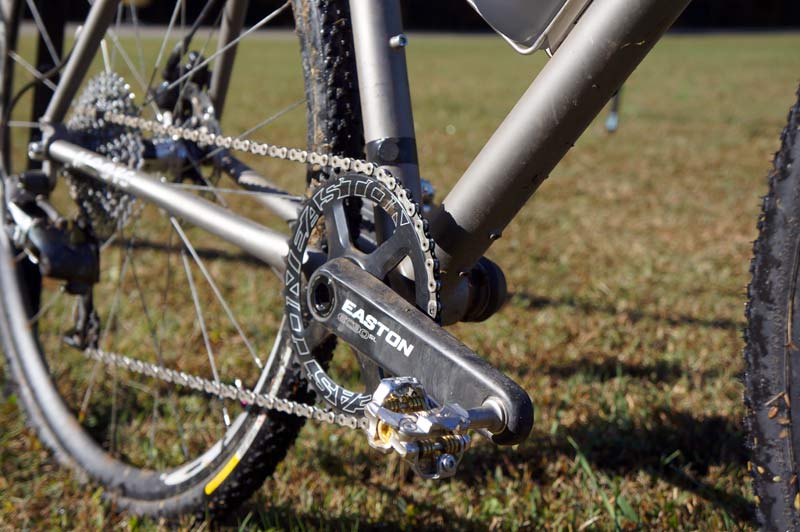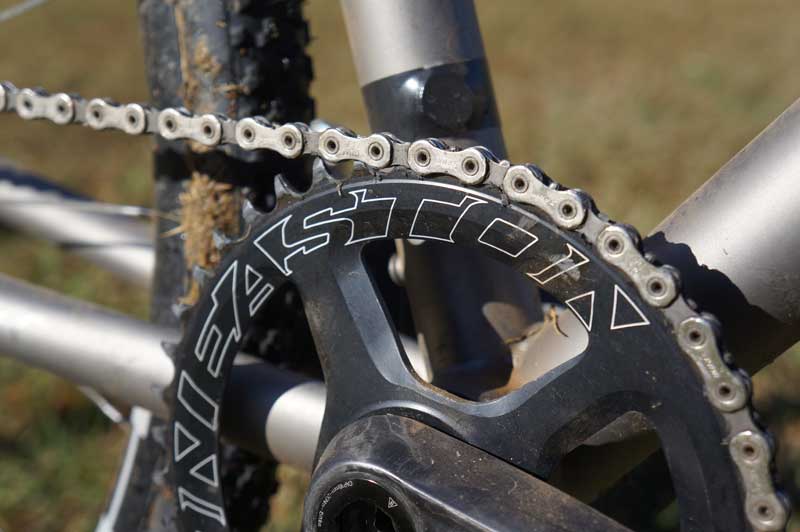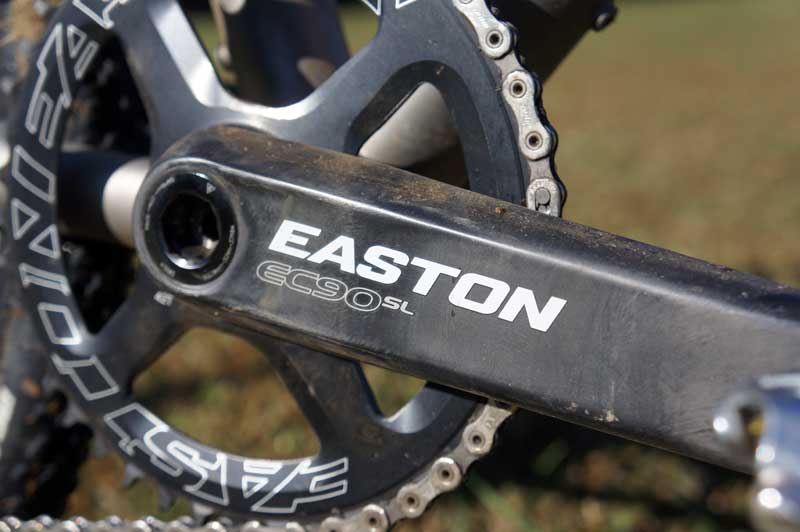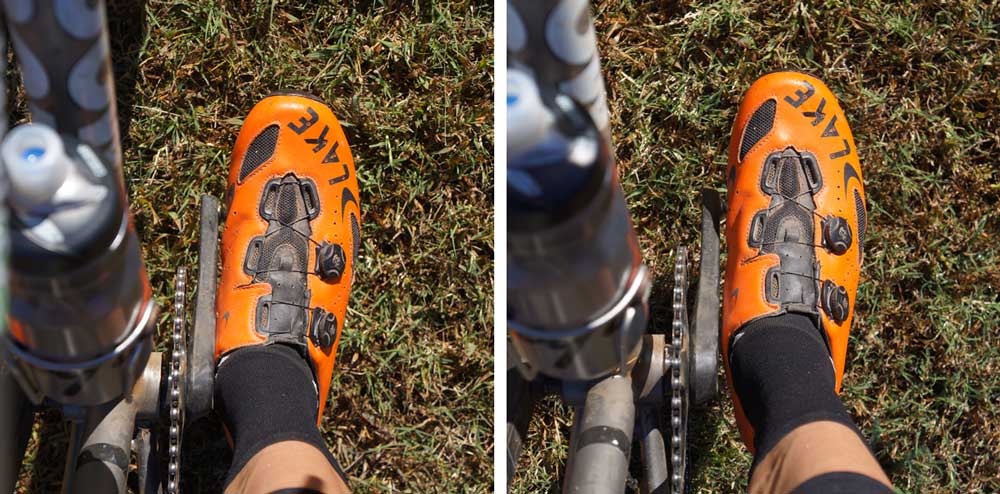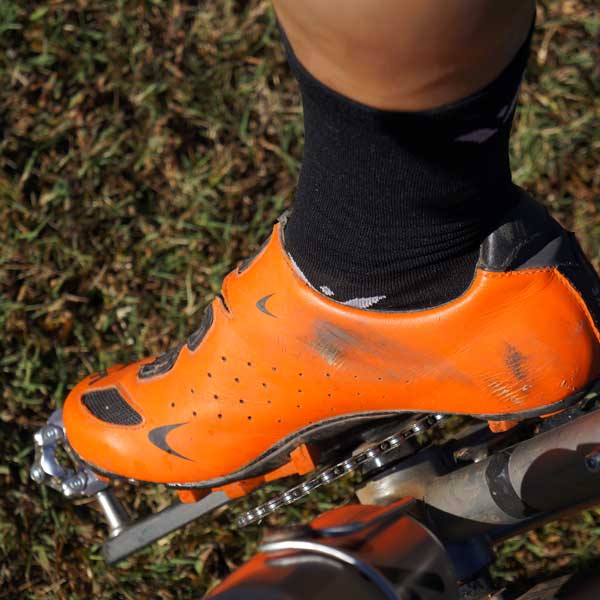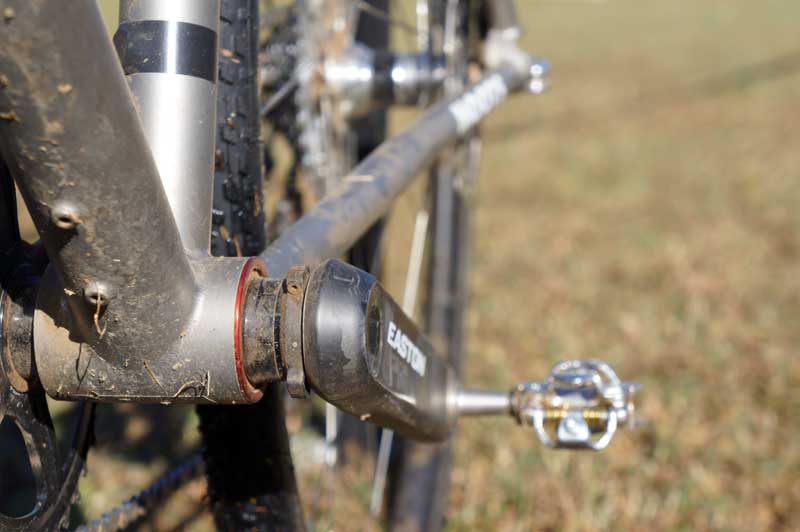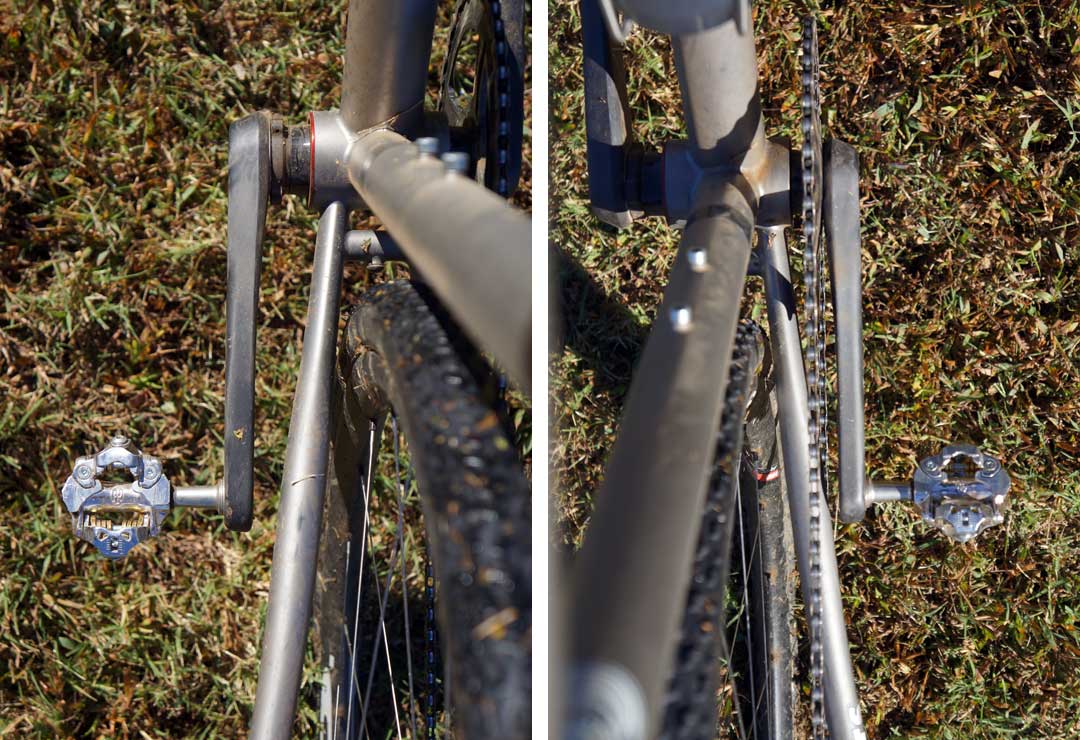This summer, we put the brand new Easton EC90 SL carbon cranks on the scale and on the bike to bring you true first impressions as they were officially announced. Then, we followed up with a tech interview on their design and features. Now, after plenty of riding and moving them onto my ‘cross bike, I have some solid impressions.
The EC90 SL cranks bring Easton back into the crank business after a long hiatus by borrowing sister brand Race Face’s lightweight carbon fiber crank technology. The same methods that make the Next SL some of the lightest and strongest cranks on the market delivers the goods here, too…
The arms are stiff, but that’s usually not the weak spot when it comes to flex in the drivetrain. Fortunately, their 1x chainrings are also quite stiff thanks to an asymmetric, angular four-arm design. Even on the largish 42-tooth ring, I couldn’t feel or see any chainring flex under power.
Chain retention is also very good, but it seems to be so at the expense of added friction at the upper extreme of the cassette. As I have it set up, the chainline is virtually straight on the middle cog of an 11-speed cassette. On the largest cog, friction feels markedly higher in the system, and it drops off by half (going by feel) on the next cog down, with further reductions on through the middle of the cassette. I could not feel a similarly high increase in friction on the bottom end of the cassette, but it was smoother in the middle for sure.
Now, a caveat: This isn’t problem exclusive to Easton. I’ve felt the same thing on a completely stock SRAM CX1 group and on various mountain bike 1x narrow/wide chainrings, too. A very clean drivetrain helps, as does a fresh coat of wax lube. But, I can feel a slight bit more friction on the largest cog, though, compared to other 1x N/W chainrings I’ve tested. Not enough to lose a race, but it’s there. The upside? It’s not noticeable in the middle of the cassette, and I never once dropped a chain regardless of how hard I was smashing roots, racing rutted grass or wiping out. They’re also quiet.
The cranks themselves are beautiful. They’re boxier than their Race Face counterparts, with harder corners at the spindle. It didn’t hurt, but the pics below show how close they are to my shoes and ankles:
Click to enlarge and you’ll see that if you tend to ride ankle-in, you’ll probably be rubbing your shoes against the cranks. As much as I do this, though, the cranks aren’t looking as worn as some other carbon cranks I’ve tested. And, you can add the clear laminate offered by Race Face along with their crank boots if you wanna keep ’em looking new(er). Easton’s rep says the boots fit, but clearance with the chain can be very tight and worth checking before riding.
These are some well worn shoes, but worth showing what happens when you’re a chronic heel rubber. (It’s also a big endorsement for Lake’s shoes as they still look good after a couple years of use in MTB and CX!)
At first, these cranks were installed on the Parlee Chebacco using a Race Face PFBB30 bottom bracket, a set up that required no spacers. Once they moved to my Moots with a BBinfinite bottom bracket, I needed to use several of Easton’s spacers. That presented a problem of trial and error because the instructions that come with them (also available by download) do not show any possible combinations or suggestions. I tried them at first with only the large, shapely spacers, and then with an additional small spacer added. The first setup left too much play. The second felt good until half way through a ride when the crank arm almost fell off. The problem? It apparently only needs one small spacer, which I opted to put on the non-drive side in order to keep the chainline straight in the middle of the cassette.
That put the non-drive arm slightly further away from the chainstays, but it doesn’t feel awkward. It’s just visually off-putting once you notice it. Since that adjustment, I haven’t had to touch the cranks (and the BBinfinite continues to perform flawlessly). It would be nice if the instructions provided more detailed guidelines, but considering the wide array of BB’s out there, it might be difficult. You could always just get one of their Easton/Race Face bottom brackets and do without spacers altogether, too.
Minor setup quibbles aside, the cranks are fantastic. Easton says the narrow/wide tooth shaping is focused on reducing friction for larger diameter chainrings, and they offer up to a 50. So maybe their larger rings are a little smoother as the chain slides to the cassette’s extremes. I won’t know. I’m not going to push anything bigger than this 42 around a cyclocross course. For me, it becomes a slight tradeoff of incredible chain management for a tiny bit more friction on the largest cog, which I’m not using very often anyway. Considering that tradeoff comes in a sleek, incredibly lightweight and otherwise perfectly functional package, I’ll take it.
